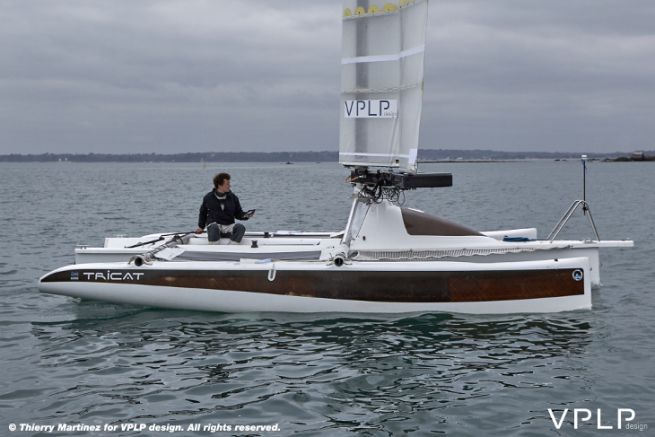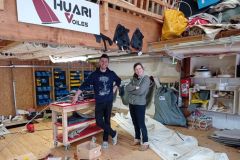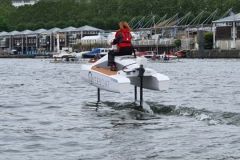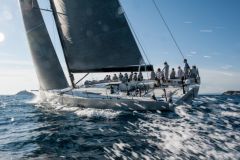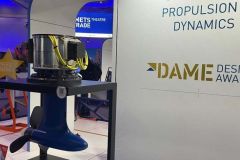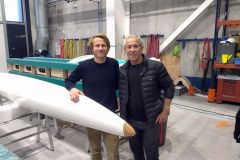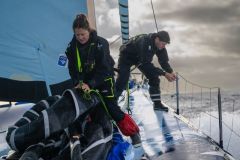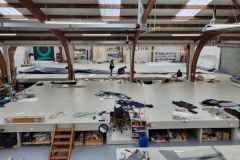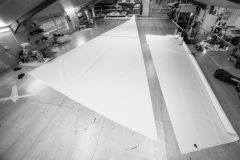The fruit of an expertise and a conviction
The naval architecture firm VPLP has been working for many years on the use of rigid wings to propel sailboats. This has allowed us to acquire real expertise in terms of design, in addition to the conviction of the future of this type of rigging on other vessels," says Marc Van Peteghem.
While the aerodynamic efficiency of the wing has been proven in coastal regattas, VPLP has become convinced that the impossibility of reducing the surface area has blocked the development of this mode of propulsion. The firm therefore decided to confront the problem with the OceanWings project.
Affalable, arisable and automated
In order to democratize the rigid wing, VPLP has set three constraints on the OceanWings. The system is collapsible and reefable to adapt to weather constraints and automatable to be applicable to large sizes. While reliable reefing wing solutions are being developed for small ocean racing boats like the mini Arkema the design and more robust structure of VPLP were guided by the desire for automation.
The rig is also fully self-supporting and rotates 360°, making it easy to install on existing platforms.
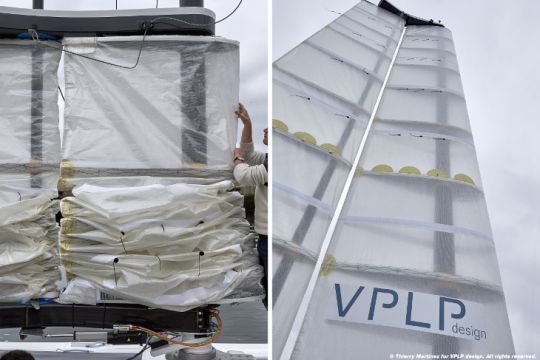
Lowering the wing
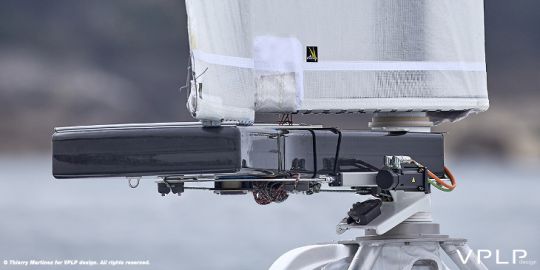
Wing control
Gaining in efficiency
Nicolas Sdez, engineer in charge of the project at VPLP, insists on the aerodynamic interest of the OceanWings: "Its efficiency, combined with an optimal control, allows, for an equivalent displacement, to reduce by almost half the sail surface of the ships which will be equipped with it"
First test campaign
The OceanWings project was financed by the ADEME. The funds allowed the testing of a prototype at scale 1, with a mast of 8m. The wing was installed on the 7m trimaran Tricat Gwalaz, built in flax fiber with Roland Jourdain's design office Kaïros.
The test campaign validated the calculation models. "The results are encouraging. It allowed us to validate the structure in a first step and the automation in a second step" says Nicolas Sdez.
Various applications
The OceanWings has been designed with a view to adapting to large vessels, thanks to automation. It is intended in particular for merchant ships and fishing boats, but it should also find applications in large yachts, and even in more traditional units over 60 feet.
"The OceanWings will not be able to equip all types of vessels or be suitable for all regions, but we are convinced that it will find its place in fields as varied as pleasure boating, yachting, maritime transport (bulk carriers, chemical tankers, oil tankers, etc.) and deep-sea fishing," says Marc Van Peteghem. When asked about the marketing method, the firm indicated that it was considering the sales model.
A second rigid version
VPLP will now work on a second prototype, integrating fully rigid panels, in order to gain in performance compared to the fabric used on this first version.
Preliminary designs for new boats and refits incorporating OceanWings are underway.
